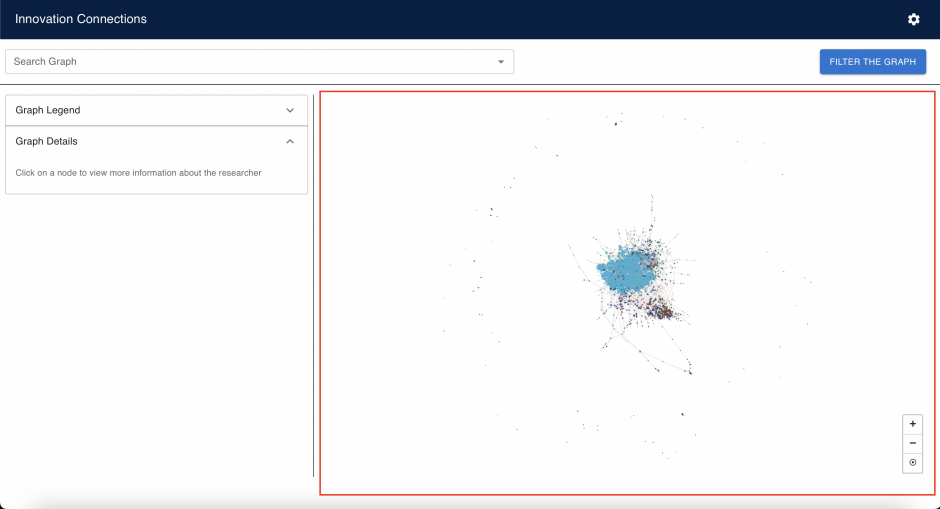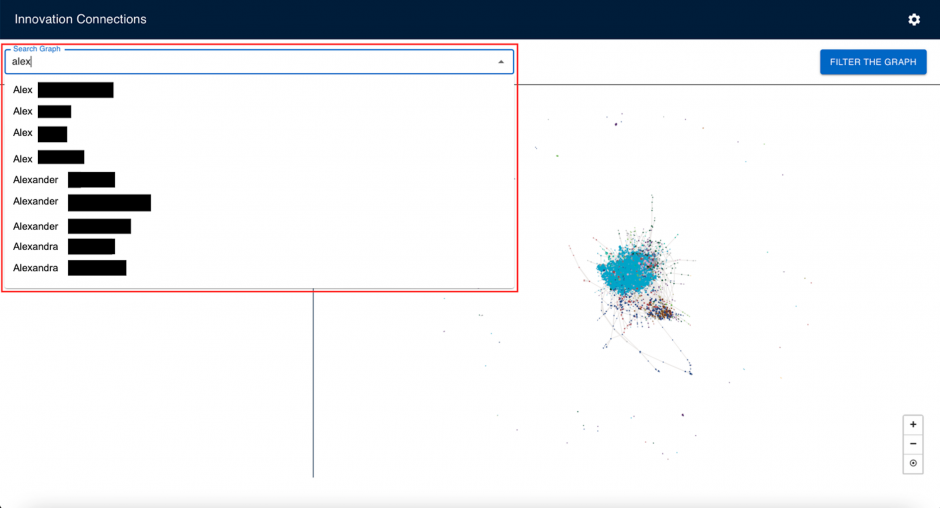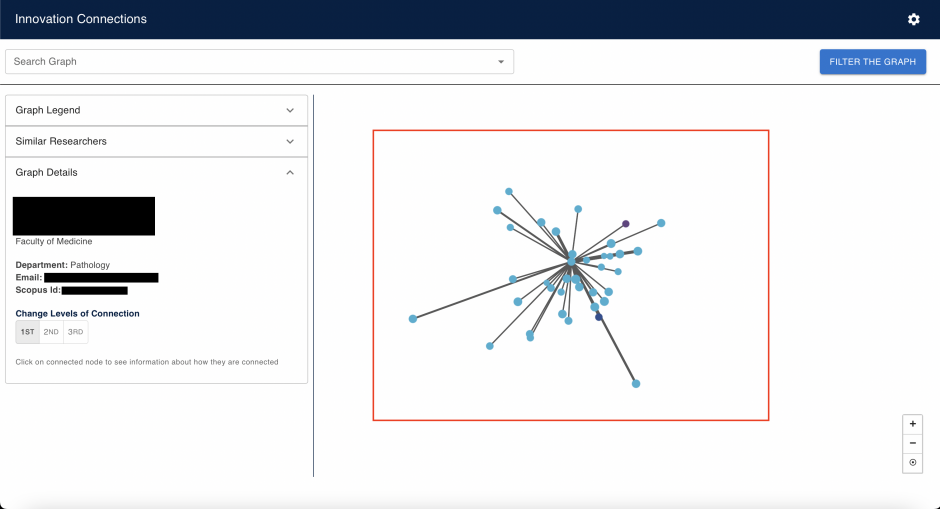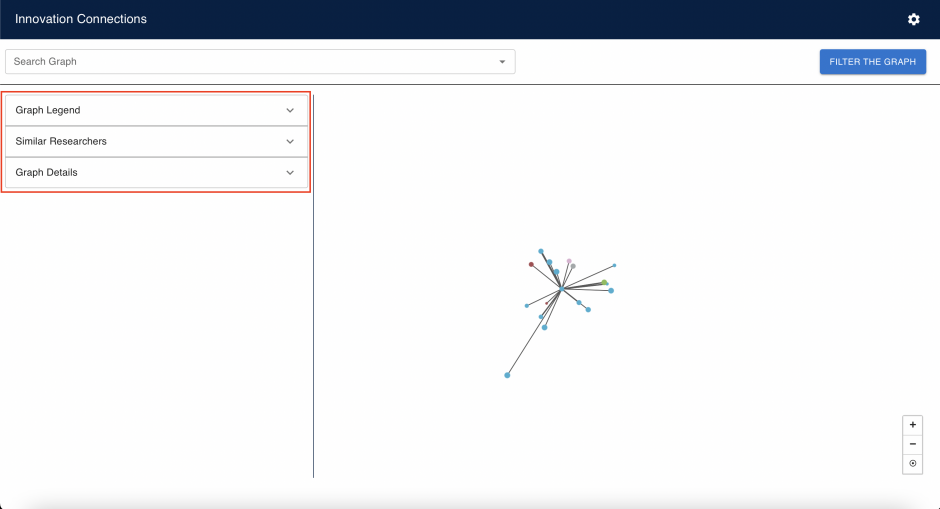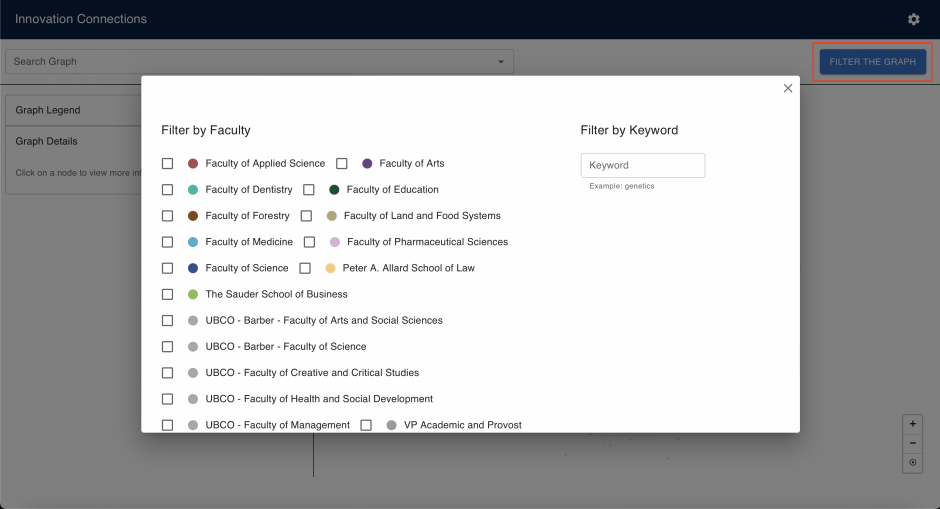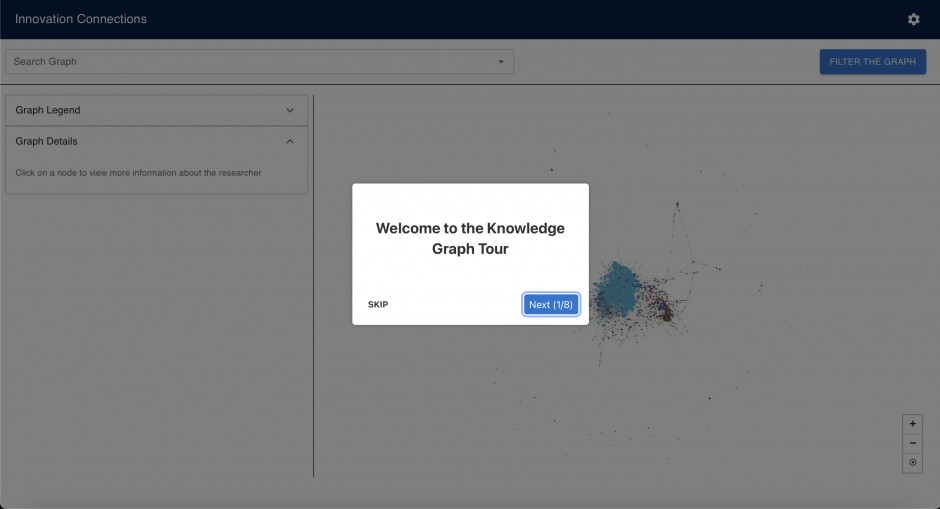
Innovation Connections – Knowledge Graph
The Innovation Connections Knowledge Graph is a Capstone project completed by students in the Faculty of Engineering for the UBC CIC. The Capstone team PN-32 built a tool for administrators to search for information on researchers to enhance an existing project developed at the UBC CIC. The UBC CIC provided AWS resources, guidance and technical expertise and the project was completed as part of the UBC Electrical and Computer Engineering (ECE) program under the supervision of a Capstone instructor. The Innovation Connections project was submitted to the 2023 Capstone Design & Innovation Day showcase as part of the ‘Facilitate Our Personal And Community Connection’ category.
Innovation Connections – Knowledge Graph
Published:
The capstone students created a short video to explain the purpose of their project and its intended use case. In the video, they also perform a walkthrough of the Knowledge Graph’s features and functions, such as the connection-degree toggle or filtering system.
When identifying opportunities that would enhance research activities, such as finding other researchers to collaborate with, there are many aspects of data that can be leveraged. However, while there is a wealth of data about each researcher, it can be a challenge to draw meaningful conclusions as the data is spread across various sources.
The solution prototype that the capstone students developed is a Knowledge Graph that visualizes the professional connections between researchers. The graph is populated by nodes that represent individual researchers and lines that show the connections between them. With the Knowledge Graph, administrators can use this tool to more efficiently locate a researcher’s contact information and area of expertise, as well as explore new networks of researchers.
Approach
On a previous project, the UBC CIC collaborated with a project sponsor to create a portal that portrays researcher information, publications, funding sources and patents. The UBC CIC saw an opportunity to create an extension of the portal with data being displayed in a more visual manner, and submitted this proposal as a challenge for the ECE capstone program. The purpose of both projects stems from the challenge that dispersed researcher data makes it challenging to identify research networks and collaboration opportunities.
The Knowledge Graph is a complex web app that ingests multiple data sets consisting of researchers’ data such as their name, email, title, department, faculty, associated keywords, Scopus ID, and research publication IDs and displays connections using graph visualizations. The solution is fully deployable as infrastructure in any AWS cloud environment.
Architecture Diagram
The architecture of the solution is shown in the following figure. For more technical detail on this and related CIC projects, visit the GitHub repository: https://github.com/UBC-CIC/Research-Innovation-Knowledge-Graph

The Knowledge Graph
There are many functions and ways to utilize the Knowledge Graph. Click on the arrows below to learn more about its components.
Refer to the User Guide on GitHub for more detailed instructions on how the Knowledge Graph can be used.
Acknowledgements
This project was architected and developed by senior students in Electrical and Computer Engineering as part of the UBC Electrical and Computer Engineering Capstone Program. Guidance was provided by a faculty member who acted as the technical director and supported by the UBC Cloud Innovation Center technical team.
About the University of British Columbia Cloud Innovation Centre (UBC CIC)
The UBC CIC is a public-private collaboration between UBC and Amazon. A CIC identifies digital transformation challenges, the problems or opportunities that matter to the community, and provides subject matter expertise and CIC leadership.
Using Amazon’s innovation methodology, dedicated UBC and Amazon CIC staff work with students, staff and faculty, as well as community, government or not-for-profit organizations to define challenges, to engage with subject matter experts, to identify a solution, and to build a Proof of Concept (PoC). Through co-op and work-integrated learning, students also have an opportunity to learn new skills which they will later be able to apply in the workforce.

